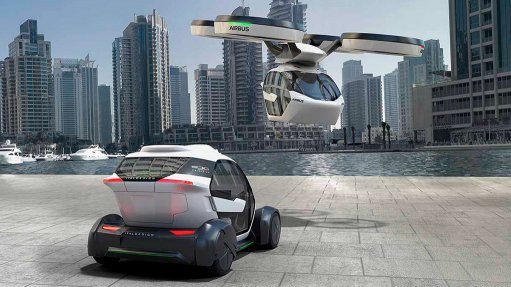
This image shows a passenger capsule coupled to a ground module and a second passenger capsule coupled to an air module
Photo by: Airbus
European aerospace giant Airbus and Italy-based transport design, engineering and production services company Italdesign have combined to design a new approach to meeting future traffic snarl-ups in major cities, which they have designated Pop.Up. This was unveiled on Tuesday at the eighty-seventh Geneva International Motor Show.
It has been forecast that urban traffic will grow hugely by 2030, and it is this which has stimulated the two enterprises to combine their engineering expertise to meet this developing problem. In their press release, the two companies described Pop.Up as “the first modular, fully-electric, zero emission concept vehicle system designed to relieve traffic congestion in crowded megacities.”
“Pop.Up envisages a modular system for multi-modal transportation that makes full use of both ground and airspace. … The Pop.Up system aims to give time back to commuters through a flexible, shared and adaptable new way of moving within cities introducing a new user-focused transportation system concept.”
The core hardware of Pop.Up has three separate components: a two-seat passenger capsule, an electrically-propelled ground module and an electrically-powered air module. The capsule is coupled, as required, to either the ground module (becoming an electric car) or to the air module (becoming a self-piloted aircraft).
These three modules together form the vehicle system, which itself is only one of the three elements, or “layers” of the complete Pop.Up concept. The first layer is an artificial intelligence platform (which manages the trip, using its user knowledge to offer alternative travel options and provide a seamless trip); the vehicle system is the second layer; the third layer is an interface module that “dialogues with the users in a fully virtual environment”.
The concept is that travellers employ a user-friendly app to plan and book their trip. The system takes into consideration all the relevant data – costs, timing, traffic density, ride-sharing demands, user knowledge and so on – and automatically proposes the best travel option, coupling the passenger capsule to either the ground or air modules, or, indeed, to another compatible transport system – the capsule could be integrated with trains, for example. The capsule could also switch from one module or transport system to another during the course of the trip, without the passengers ever having to disembark from it. At the end of the journey, the air and ground modules, with the capsule, would automatically return to designated recharge stations.